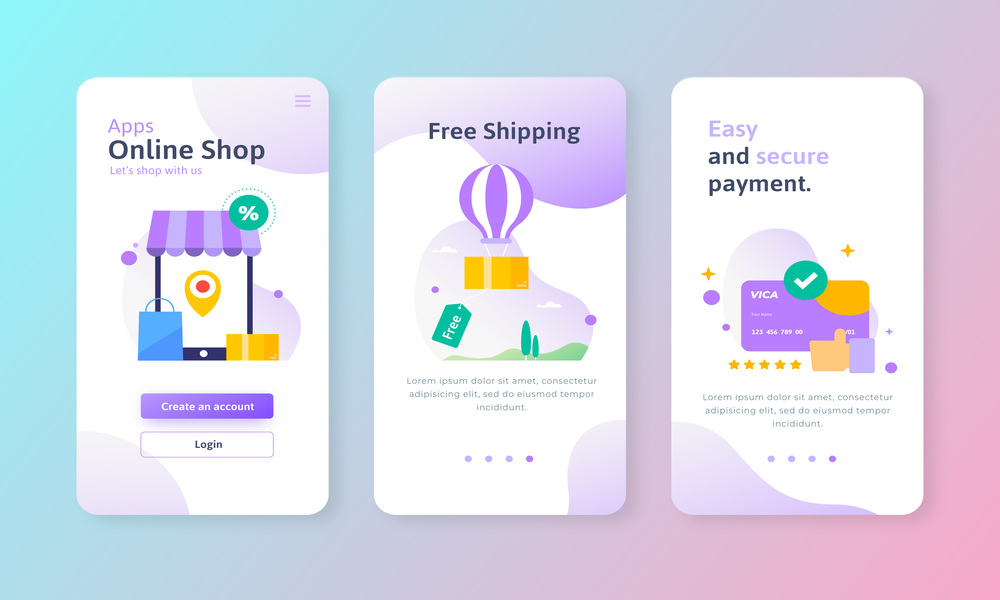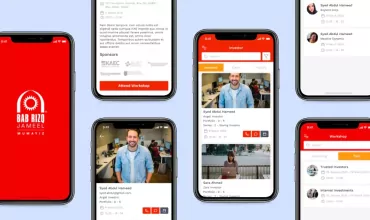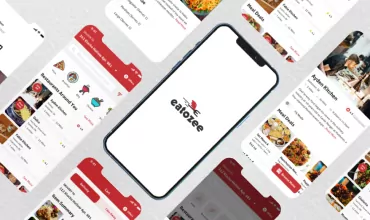Basics & Tips on Mobile App Onboarding Process

Table of Contents
Onboarding is the procedure of getting the user base familiar with a fresh interface. The app onboarding process involves user introduction, functionality promotions, instructions, and guidelines.
In this blog, we will discuss what is onboarding in mobile apps, the necessity of mobile app onboarding, mobile app onboarding best practices, categories of onboarding, and making use of users’ information for tracking their success or failures.
It’s a fact that thousands of mobile apps are being uploaded on App Store and Play Store. The product managers spend their best efforts, time, and money to make the people download their applications. Then it is interesting to know why it’s a harsh reality according to a report, which says that 80%-90% of all the downloaded mobile apps from the store are downloaded once to try and be deleted later.
Your mobile app development project, either native Android app, iOS app, or a cross-platform app, is not completed with the launch. Apparently, the mobile app launch process is merely the first of the many steps in the process of becoming a successful app owner. It requires more than just app development, in other words, emphasis on mobile app onboarding. App onboarding is the process and a term that has a significant impact upon the success of your mobile application development project.
What is Mobile Application Onboarding?
The first impression created on a user’s mind is the only thing that matters here. Trust me that nothing else matters here to decide the journey of your post-launch app marketing. This is the onboarding process where users interact with the mobile app for the first time. App onboarding is the make or break situation for any mobile app development project. No one is coming back to download the app if the first take did not go well.
The need of mobile app onboarding
To highlight the point in brief with facts, it’s depicted from the findings of the Slice that mobile app retention rates were upto 50% after the planning and implementation of the app onboarding process.
However, let us discuss the need of it:
Think about your own self and your habits with the applications that you download on your smartphone. Out of all the apps, there will be at least a couple of apps you may have downloaded once to check it out or used only a couple of times, and since then has been there racking up the space of your storage and doing nothing at all or getting used. Few goodies we can collect from app onboarding process are:
- Mobile app onboarding exhibits the value of the respective app by highlighting the key features of your app.
- It allows the businesses to identify and optimise first interaction by creating an engaging UX.
- Understanding and utilising the onboarding process helps make the first-time user transition as seamless as possible, minimising potential pain points. Users quite often lose interest when an app is confusing and difficult to navigate.
Types of Onboarding
Benefits-Oriented Onboarding
It defines the functionality of the app without explicitly guiding the users to use the app. This will add app value to the users and encourage conversion.
Function-Oriented Onboarding
It showcases the users how to get started with the app and how to perform common actions. Although the focus will remain on the core functionality of the app.
Progressive Onboarding
This approach is based on the progress of the users as they gradually navigate through the app. The information displayed on the screen at the time is in relevance to the page the user is on.
Perfect Tips to Onboard New Users
Considering all, it may be a fair deal to say that there is no magic stick or an immortal formula with which you can save your mobile application future. However, there are some expert tips associated which you may want to consider for the mobile app onboarding process.
Epitome of Simplicity & Focused Content
Homepage is the most important for onboarding the new users. They do need proper guidance, but certainly do not entertain loads of content. Explain the core functionality of the app in an unambiguous manner to keep it clear for understanding by all the people, that is your Value Proposition. The design should be relevant with all that looks and feels to match your value proposition. Help users to remain connected with the journey while also giving an option to bail out with a “Skip” button if needed.
Show Things Rather Than Telling
It is universally accepted in the world of mobile apps that much of the text after a limit sucks the brains out of many users in the first step. You should rather be focusing on installing that interactive user experience. Interactivity allows users to complete the small bits they need to learn and delve seamlessly for the deep learnings of the app.
Simple Login and Registration
This is always tricky and this step depends much upon your app functionality and business objectives, especially if there are in-app purchases involved. The ways, the time, etc. to make users sign up or sign in is crucial. You may want to try out with various login options- social login vs. email login vs. no login at all, if that suits your goals. About timing, you need to identify when would be the best moment to ask a user to log-in? Is it at the beginning of the app or somewhere in between after opening a couple of app screens?
You can also come up with a short textual content assuring the security of the user’s personal information like a mobile number or an email.
Being Human
No offence to the Machine Learning and Artificial Intelligence powered Chatbots and many more advanced solutions, but we humans love that touch of emotions and human expression when experiencing something new, physically or digitally. Your app content as a guide for the new users must be felt by the users as the human thing. They should feel they get the information on the screen by a human with emotions to make them act accordingly.
Make Use of Users’ Data
Monitoring usage and app analytics can help provide insight into which users are experiencing problems in the app and where. Tracking where users succeed and fail during the onboarding process can help you mitigate any potential pain points.
You May Never Get A Second Chance
It may be the last time that you wish to make your mobile app a success. IndiaNIC can help to shape up your mobile app with the help of experts with years of experience. Hire QA experts from IndiaNIC who will test your mobile app with speed, efficiency, reliability, and help you resolve all the imperfections.
If you wish to have your doubts cleared, then contact the experts at IndiaNIC.
FAQs on Mobile Application Onboarding Process
Why mobile application onboarding is crucial?
Mobile application onboarding is significant because it leads to higher engagement rates and longer-term user base retention opportunities.
How to decide on an onboarding category?
Diverse apps necessitate different levels of onboarding oversight. Consequently, when developing and shaping your application’s onboarding experience, comprehend your user base and their complete journey prior to deciding on an onboarding category.
What are the finest practices for a captivating onboarding strategy?
- Enable cross-channel engagement
- Precise and clear instructions
- Celebrating completion and progress
Why pick your highlighted features cleverly during the onboarding process?
Getting carried away with your own inventiveness and wishing to display all the cool things about your mobile application can devastate your users all through the extremely delicate onboarding procedure. So, select your key and highlight features smartly.
How to meet the expectations of your new users while onboarding?
Have trials with your application to make sure your fresh users are met with clear guidelines and precise instructions so that they are not overwhelmed by your app’s fantasies.



